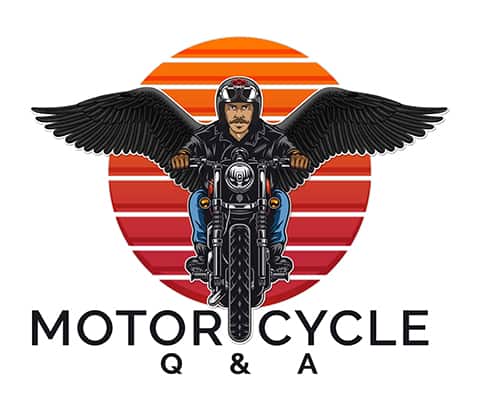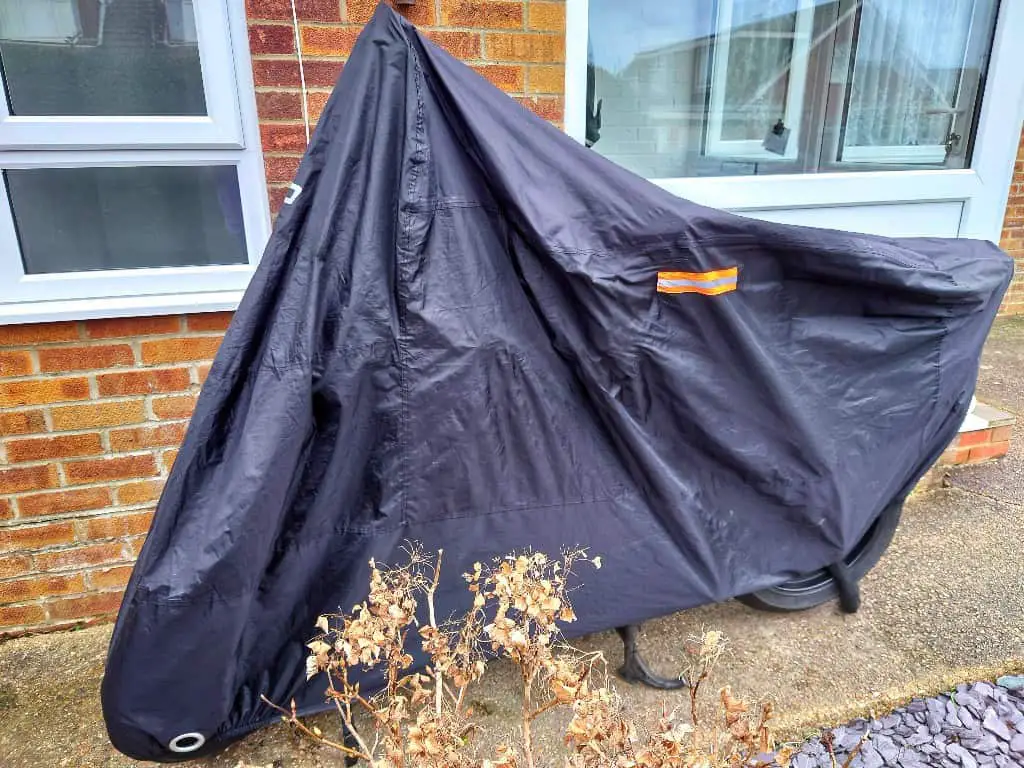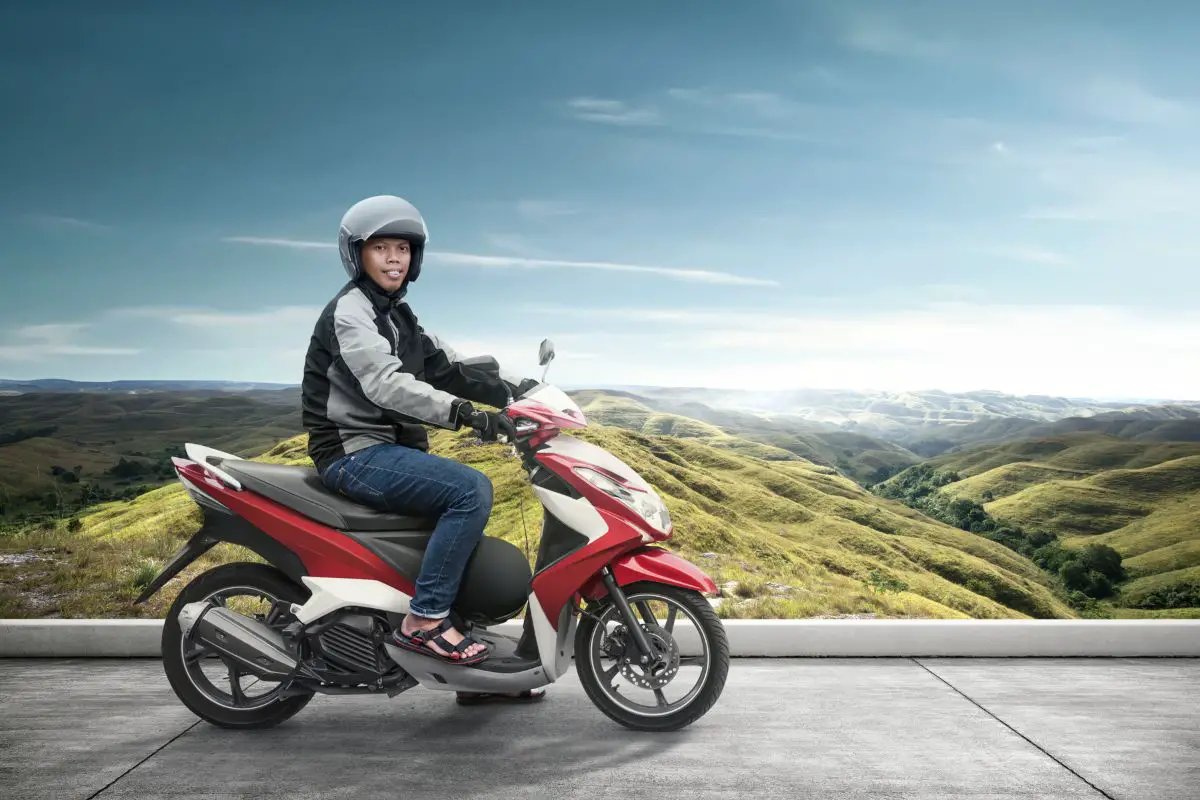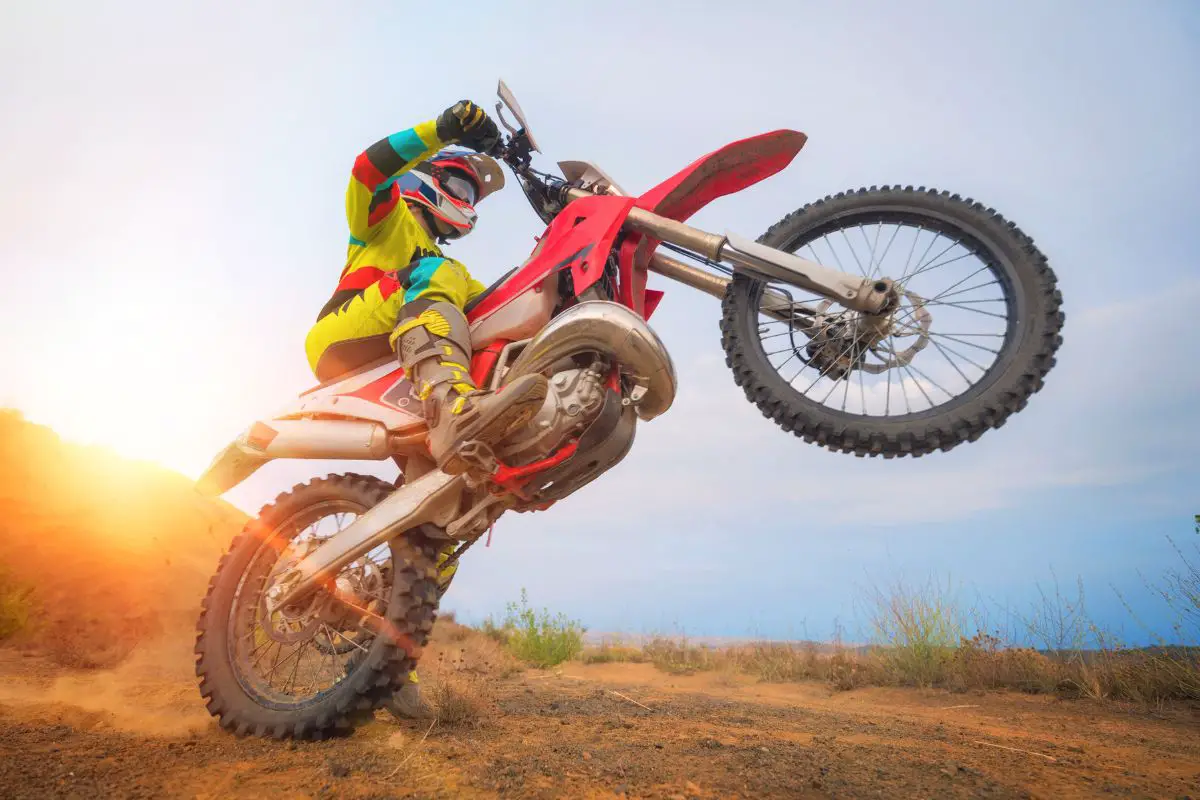Like many other motorcyclists, I use my bike for various reasons and will often travel in different weather conditions. Riding through the rain or having to park my motorcycle in the rain is something I have to do quite regularly, especially in the winter.
So, should you cover a wet motorcycle?
It would be best if you did not cover a wet motorcycle. Covering a bike when wet can cause corrosion of the electrical system and other areas, as well as faults in the motorcycle’s more sensitive parts. It would be best if you dried the bike before covering it or use a breathable cover.
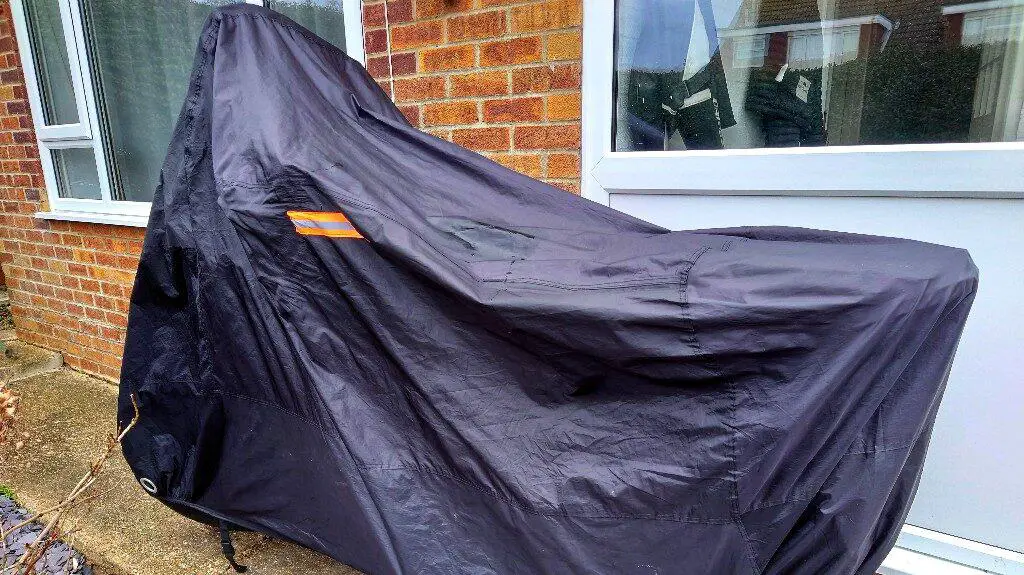
Many motorcycle owners don’t bother covering their bikes and question whether it is necessary or not. Still, there are reasons why the general census is that motorcycles should be covered when dry to protect them from the effects of weather. Covering your bike when it is wet comes with its own batch of potential problems.
I want to thank the sponsors of this post-EMANUALONLINE. Using their service, you can download your motorcycle or car manual to your mobile phone or any other device, so you will have it handy should you ever be out and about and need to use it. You can visit their website by clicking the icon below and using the code BUDDY15 to get a 15% discount.
What Are The Risks When Covering A Wet Motorcycle?
Covering a wet motorcycle can cause serious problems with the electronic parts of the bike. The cover over the damp bike and the engine’s heat creates a moist environment where corrosion could occur over time, which stops the bike from drying out.
Water can enter into unwanted areas of the motorcycle. With no sun or wind to dry the bike out, areas of the motorcycle can stay wet for hours, causing rust and eventually broken connections or other parts.
You should check specific areas off a motorcycle when exposed to rain or moisture, especially if the bike has been covered for quite some time. The areas to check are the chain, any pivot points like the kickstand, suspension leakage grease points, and shift linkages.
It is good to wax the chrome parts of the bike to stop it from rusting. The heat and the moisture can also cause the leather on the seat to smell if not allowed to dry thoroughly.
I use ACF50 on my motorcycle throughout the year, which protects the bike from any adverse effects covering a motorcycle may cause. I have been using this product for many years and have had no problems with my motorcycles.
However, unless I have had to cover my motorcycle for safety reasons, I have never covered it when wet. I just leave it outside in the elements.
Washing my motorcycle regularly and then protecting it with a product such as ACF 50 is what I have done for decades, and all of my bikes have kept extremely well.
When A Motorcycle Should Be Covered And When It Shouldn’t
It is important to note that modern-day motorcycles are built to withstand most weather conditions. Most bikes can get wet without damage to their parts and systems, provided they can dry out properly. Older bikes may not cope so well.
The problem is not whether a bike can handle the rain or not, but rather the potential problems caused by not allowing a motorcycle to dry out before it is covered.
If a motorcycle is rained on and then left to dry in the sun or outdoors most of the time, it will be 100% okay. If it is only left for a few hours and then ridden again, the wind will blow out any remaining moisture collected in small gaps of the bike.
Most motorcycles are manufactured to a very high standard in this day and age, and any moisture will dry out of the bike if left in the sun. You should not be too concerned if you have to leave your motorcycle out in the rain as damage to it will be very unlikely.
Covering your motorcycle before it rains is a great idea to keep your bike dry and happy. In this case, it is vital to ensure that the cover being used is waterproof and covers your bike fully.
Another good reason to cover your bike is to protect it from sun damage which can cause damage to leather and some metals. Sun damage can also cause the paint to fade on the motorcycle, and using a cover, especially if the sun is intense, will protect the paintwork of your bike as well.
Covering your bike to protect it from sun exposure or covering it before the rain starts is one of the best ways you can care for your bike.
If your motorcycle is not your primary use of transport, it may sit for a few days at a time not being used, so a cover would be especially a good investment to keep your bike in good shape and well protected. This is especially relevant if your motorcycle is kept outdoors.
Covering the bike after it is wet is not useful or beneficial and will only cause problems in the long run. If the bike is wet, a good tip I have is to leave it to dry, start it up to make sure all the water blows out of the exhaust, and wipe it down with a dry cloth or shammy.
4 Tips To Protect A Motorcycle Instead Of Covering It
- Waxing
- Spray cleaner
- Use ACF50 Or Boeshield
- Anti-corrosive paint
#1 Waxing
Waxing as much of the bike as possible will help prevent corrosion and water damage to certain bike parts.
Foot-peg mounts, engine cases, the frame, and the wheels can all get a layer of wax. Be sure you are using the appropriate wax for motorcycles.
#2 Spray Cleaner
Using a spray cleaner like WD-40 to treat parts of the bike that you cannot wax is an adequate substitute. WD stands for “water displacing.” This product works well for leaving a film on parts of a motorcycle to stop water from corroding the metal or wiring.
Spray cleaner can be used on most motorcycle parts as extra protection and treatment against corrosion that may occur.
#3 Use ACF50 or Boeshield
ACF50 and Boeshield are used on aircraft as a sealer to prevent corrosion and work very well on motorcycles. I have personally used ACF50 on all of my motorcycles for many years and have never had any electronic or corrosion problems caused by rain or moisture from covering my motorcycle.
I spray the ACF50 into a cloth and then wipe it all over my motorcycle. It creates a barrier that protects the surface of the bike against the elements. I also spray it onto any electrical parts of the bike I can see.
#4 Anti-corrosive Paint
Painting the areas that corrode the fastest, like bolts, hose ends, and banjo fittings, with anti-corrosive paint will make these parts last much longer.
Other sections of the bike can be painted with anti-corrosive paint, which will help reduce any corrosion depending on the rider’s preferences and style.
How To Dry A Motorcycle Quickly?
- Use a shammy cloth
- Use a leaf blower
- Use a professional bike dryer
#1 Use a shammy cloth
Using a drying cloth like a shammy cloth or something similar will be most effective to wipe down your motorcycle. It is a good idea to wipe as much of the motorcycle dry as possible before doing anything else.
Once your bike is dry you can cover it knowing that the cover will cause no adverse effects.
#2 Use a Leaf Blower
Many riders use leaf blowers or air compressors to dry out their motorcycles quickly and efficiently. Be sure to not get too close to the bike when using one of these products so that you don’t loosen any parts with the air pressure or damage anything on the bike.
It is also a good idea to clean the leaf blower before using it in case of any left-over debris or sand in the blower scratch or damage your bike.
#3 Use a Professional Bike Dryer
A good airflow blowing on the bike will dry it out well, especially after wiping it dry first. The most recommended option is to purchase a professional bike dryer designed to dry a bike without causing any damage.
What to Consider When Buying A Bike Cover
- Size of the cover
- Waterproofing
- Heat resistance
- Inner lining
- Anti UV
#1 Size Of The Cover
Size is important, so make sure the measurements of any motorcycle cover you purchase are suitable for your particular bike. The cover should comfortably fit over your motorcycle and covers the bike entirely.
#2 Waterproofing
Waterproof materials within the cover are required if you are planning on parking your motorcycle outdoors. Fabrics with heavy polyester or with a polyurethane coating are great for waterproofing. The double stitching on the seams also helps keep water out.
#3 Heat Resistance
Heat-resistant material is necessary if you will be covering the bike immediately after riding it. The heat from the engine and exhaust will melt other materials, which can damage your bike as well. This heat-resistant fabric is normally found on the inside of the cover. On the motorcycle covers I own, the heat-resistant material inside the cover is silver in color.
#4 Inner Lining
A soft inner lining will help protect the paint and leather of the bike when covered. However these can be fairly pricy.
#5 Anti UV
Anti-UV materials will help protect the bike from sun damage, which is also needed if you will be parking your motorcycle outdoors. Ensure you check that any cover you purchase protects your bike from the sun, as this is a real benefit safeguarding your bike’s paintwork and other parts from the sun when needed.
These are my Recommended Bike Covers For Overall Use.
To get the latest prices and more information on my recommended Motorcycle covers, click HERE, and you will be taken to my Recommended Motorcycle Covers, where you can check out the latest prices.
- Favoto Waterproof Motorcycle Cover
- XYZCTEM All-Season Motorcycle Cover
- Badass Moto Ultimate Waterproof Motorcycle Cover
- XYZCTEM Motorcycle Cover -Waterproof
- Nelson Rigg Defender Extreme Sport Bike Cover
- Dowco Guardian 50022-00 All-Weather XXXL
Conclusion
Owning a cover to protect your motorcycle is an excellent investment and will help protect your bike for many years. Knowing when to cover it and when not can save any bike owner stress and money being spent on unnecessary repairs.
Covering a wet motorcycle presents high corrosion risks and damage to a bike’s parts and electronic systems. It is better to allow a bike to dry out before being covered or left uncovered entirely.
Many riders do not own covers for their bikes but for those who park their motorcycles outdoors. It is well worth the money spent!
Do not cover a wet motorcycle, but rather cover it after ensuring the bike is dry.
Happy riding!
